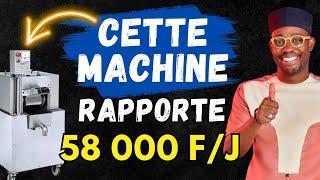E-commerce business models refer to the various strategies and structures that online businesses use to sell products or services. Here are the primary types:
### 1. **Business to Consumer (B2C)**
- **Definition:** Direct selling to consumers.
- **Example:** Online retail stores like Amazon, HomeExcellence.
- **Features:** User-friendly interfaces, wide product range, direct marketing strategies.
### 2. **Business to Business (B2B)**
- **Definition:** Selling products or services to other businesses.
- **Example:** Alibaba, bulk product suppliers.
- **Features:** Volume discounts, long-term contracts, wholesale pricing.
### 3. **Consumer to Consumer (C2C)**
- **Definition:** Consumers sell directly to other consumers.
- **Example:** eBay, Etsy.
- **Features:** Peer-to-peer transactions, second-hand goods, niche products.
### 4. **Consumer to Business (C2B)**
- **Definition:** Consumers offer products or services to businesses.
- **Example:** Influencer marketing, stock photography.
- **Features:** Consumer-driven pricing, project-based work.
### 5. **Direct to Consumer (D2C)**
- **Definition:** Manufacturers sell directly to consumers without intermediaries.
- **Example:** Warby Parker, Dollar Shave Club.
- **Features:** Brand control, personalized shopping experience, competitive pricing.
### 6. **Subscription-based**
- **Definition:** Recurring revenue through subscription fees.
- **Example:** Netflix, Dollar Shave Club, Birchbox.
- **Features:** Consistent revenue stream, customer retention focus, regular content/product delivery.
### 7. **Dropshipping**
- **Definition:** Selling products without holding inventory; suppliers ship directly to customers.
- **Example:** Oberlo with Shopify stores.
- **Features:** Low startup cost, wide product range, reliance on third-party suppliers.
### 8. **White Labeling and Private Labeling**
- **Definition:** Selling generic products under a brand’s name; customized or branded products manufactured by a third party.
- **Example:** Many skincare and supplement brands.
- **Features:** Brand differentiation, control over pricing, reliance on third-party manufacturers.
### 9. **Wholesale**
- **Definition:** Selling products in bulk at discounted prices.
- **Example:** Costco, BJs.
- **Features:** Volume discounts, business customers, bulk packaging.
### 10. **Marketplace**
- **Definition:** Platform where multiple sellers offer products to buyers.
- **Example:** Amazon, eBay, Etsy.
- **Features:** Wide product variety, competition among sellers, platform fees.
### 11. **Freemium**
- **Definition:** Offering basic services for free while charging for premium features.
- **Example:** LinkedIn, Spotify.
- **Features:** Large user base, conversion focus on premium users, scalable.
### 12. **Affiliate Marketing**
- **Definition:** Earning commissions by promoting other companies' products.
- **Example:** Amazon Associates, affiliate bloggers.
- **Features:** Performance-based, no need to handle products, reliant on marketing skills.
### 13. **Crowdfunding**
- **Definition:** Raising small amounts of money from a large number of people.
- **Example:** Kickstarter, Indiegogo.
- **Features:** Funding without traditional investors, customer validation, community building.
### 14. **On-demand Services**
- **Definition:** Providing services as per customer demand.
- **Example:** Uber, DoorDash.
- **Features:** Immediate service delivery, app-based interfaces, real-time availability.
Each model has its own set of advantages and challenges, making it important to choose the one that aligns best with your business goals, target audience, and resources.
### 1. **Business to Consumer (B2C)**
- **Definition:** Direct selling to consumers.
- **Example:** Online retail stores like Amazon, HomeExcellence.
- **Features:** User-friendly interfaces, wide product range, direct marketing strategies.
### 2. **Business to Business (B2B)**
- **Definition:** Selling products or services to other businesses.
- **Example:** Alibaba, bulk product suppliers.
- **Features:** Volume discounts, long-term contracts, wholesale pricing.
### 3. **Consumer to Consumer (C2C)**
- **Definition:** Consumers sell directly to other consumers.
- **Example:** eBay, Etsy.
- **Features:** Peer-to-peer transactions, second-hand goods, niche products.
### 4. **Consumer to Business (C2B)**
- **Definition:** Consumers offer products or services to businesses.
- **Example:** Influencer marketing, stock photography.
- **Features:** Consumer-driven pricing, project-based work.
### 5. **Direct to Consumer (D2C)**
- **Definition:** Manufacturers sell directly to consumers without intermediaries.
- **Example:** Warby Parker, Dollar Shave Club.
- **Features:** Brand control, personalized shopping experience, competitive pricing.
### 6. **Subscription-based**
- **Definition:** Recurring revenue through subscription fees.
- **Example:** Netflix, Dollar Shave Club, Birchbox.
- **Features:** Consistent revenue stream, customer retention focus, regular content/product delivery.
### 7. **Dropshipping**
- **Definition:** Selling products without holding inventory; suppliers ship directly to customers.
- **Example:** Oberlo with Shopify stores.
- **Features:** Low startup cost, wide product range, reliance on third-party suppliers.
### 8. **White Labeling and Private Labeling**
- **Definition:** Selling generic products under a brand’s name; customized or branded products manufactured by a third party.
- **Example:** Many skincare and supplement brands.
- **Features:** Brand differentiation, control over pricing, reliance on third-party manufacturers.
### 9. **Wholesale**
- **Definition:** Selling products in bulk at discounted prices.
- **Example:** Costco, BJs.
- **Features:** Volume discounts, business customers, bulk packaging.
### 10. **Marketplace**
- **Definition:** Platform where multiple sellers offer products to buyers.
- **Example:** Amazon, eBay, Etsy.
- **Features:** Wide product variety, competition among sellers, platform fees.
### 11. **Freemium**
- **Definition:** Offering basic services for free while charging for premium features.
- **Example:** LinkedIn, Spotify.
- **Features:** Large user base, conversion focus on premium users, scalable.
### 12. **Affiliate Marketing**
- **Definition:** Earning commissions by promoting other companies' products.
- **Example:** Amazon Associates, affiliate bloggers.
- **Features:** Performance-based, no need to handle products, reliant on marketing skills.
### 13. **Crowdfunding**
- **Definition:** Raising small amounts of money from a large number of people.
- **Example:** Kickstarter, Indiegogo.
- **Features:** Funding without traditional investors, customer validation, community building.
### 14. **On-demand Services**
- **Definition:** Providing services as per customer demand.
- **Example:** Uber, DoorDash.
- **Features:** Immediate service delivery, app-based interfaces, real-time availability.
Each model has its own set of advantages and challenges, making it important to choose the one that aligns best with your business goals, target audience, and resources.
- Catégories
- E commerce Ebay















Commentaires